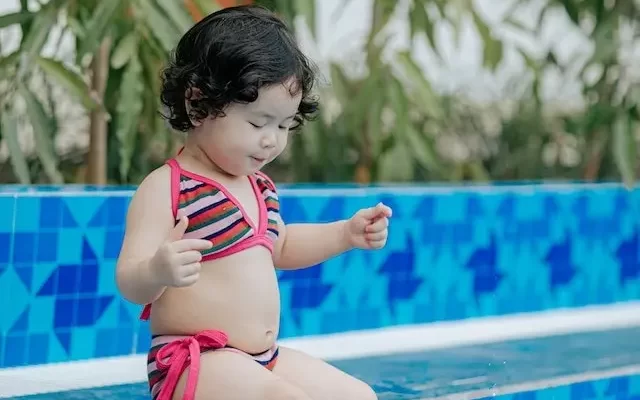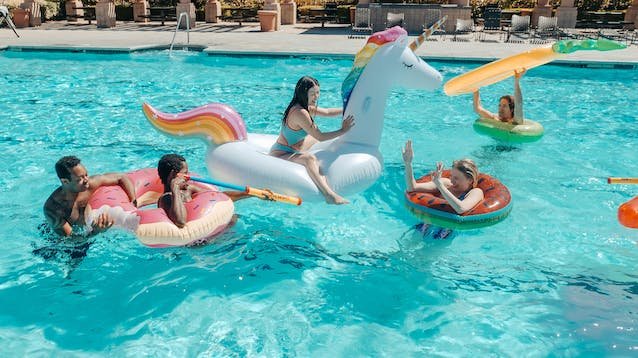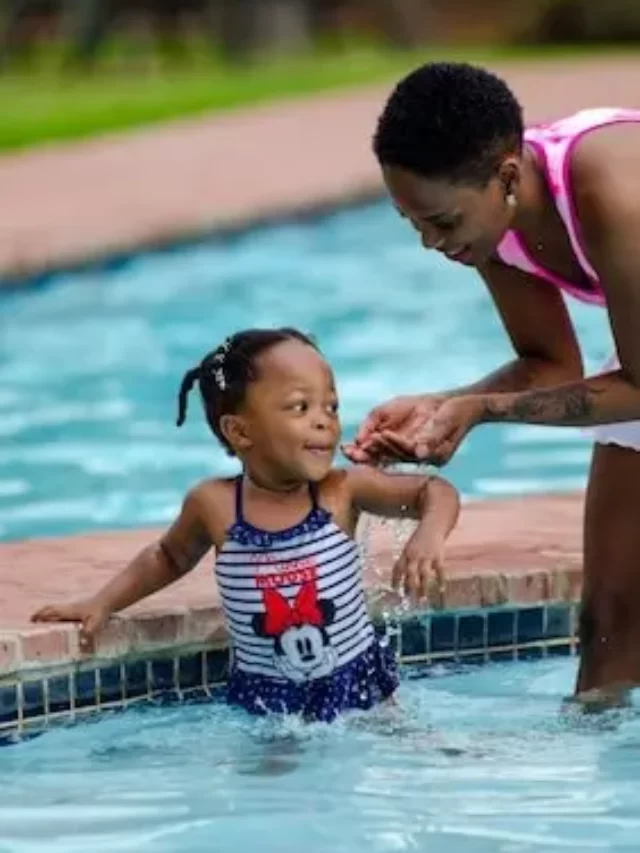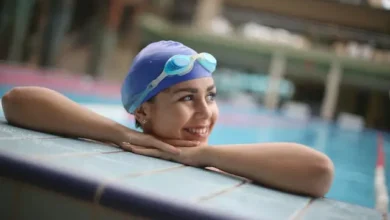Adaptive Aquatics: Unlocking the World of Inclusive Swimming for Individuals with Special Needs
Swimming is not just a recreational activity but a therapeutic experience transcending boundaries. This comprehensive guide delves into adaptive aquatics, exploring inclusive swimming activities designed to cater to individuals with special needs. From enhancing physical well-being to fostering a sense of community, these activities open doors to aquatic possibilities.
In this article,
Why is swimming beneficial for individuals with special needs?

- Holistic Development:
- Swimming promotes physical, mental, and emotional well-being.
- Buoyancy in water reduces the impact on joints, making it an ideal exercise for individuals with mobility challenges.
- Sensory Stimulation:
- Water provides unique sensory experiences, enhancing tactile and proprioceptive feedback.
- The calming effect of water benefits individuals with sensory processing disorders.
- Social Interaction:
- Inclusive swimming fosters a sense of community and belonging.
- Socializing during swim sessions contributes to improved communication and interpersonal skills.
- Confidence Building:
- Achieving swimming milestones boosts self-esteem and confidence.
- Overcoming challenges in the water translates to increased resilience in daily life.
What Safety Measures Should Be Taken in Adaptive Aquatics?
- Individualized Supervision:
- Every participant should have dedicated, trained supervision based on their specific needs.
- Trained professionals ensure a safe and supportive environment during aquatic activities.
- Adapted Equipment:
- Utilize specialized equipment such as flotation devices, adaptive swimwear, and accessibility features.
- Adaptations enable individuals with diverse abilities to participate comfortably and safely.
- Emergency Preparedness:
- Develop and communicate clear emergency protocols.
- Trained staff should be equipped to handle situations specific to individuals with special needs.
How Can Activities Improve Motor Skills?

- Water Resistance Exercises:
- Water resistance enhances muscle strength and motor coordination.
- Tailored exercises help individuals develop fine and gross motor skills.
- Balancing Activities:
- Activities that challenge balance and coordination contribute to improved motor skills.
- Floating, kicking, and arm movements in water engage different muscle groups.
- Gradual Progression:
- Implement a gradual progression approach to accommodate individual abilities.
- Celebrate small victories and provide positive reinforcement to encourage continuous improvement.
What Inclusive Swimming Activities Can be Introduced?
- Water Aerobics:
- Adaptive water aerobics classes offer a full-body workout in a supportive environment.
- Tailor routines to accommodate various mobility levels.
- Aquatic Yoga:
- Gentle yoga poses in the water enhance flexibility, balance, and relaxation.
- Adapt poses based on participants’ abilities, ensuring a comfortable experience.
- Water Polo and Team Sports:
- Inclusive water sports foster teamwork and collaboration.
- Modify the rules and equipment to create an accessible and enjoyable experience.
How can aquatic activities support mental health?

- Stress Reduction:
- The soothing nature of water promotes stress reduction.
- Aquatic activities contribute to improved mental well-being and relaxation.
- Sensory Integration:
- Water’s sensory benefits positively impact individuals with sensory processing disorders.
- The calming effect supports emotional regulation and reduces anxiety.
- Community Connection:
- Participating in adaptive aquatics builds a sense of community and shared experience.
- Socializing during activities reduces feelings of isolation and loneliness.
What training is required for instructors in adaptive aquatics?
- Specialized Certification:
- Instructors should undergo specialized training in adaptive aquatics.
- Certification programs focus on understanding diverse needs and creating inclusive environments.
- Continuous Education:
- Stay updated on the latest developments in adaptive aquatics.
- Ongoing education ensures instructors are equipped to provide the best support for participants.
- Communication Skills:
- Instructors need effective communication skills to understand and address individual needs.
- The ability to adapt instructions based on participants’ communication styles is crucial.
How Can Families Encourage Inclusive Swimming at Home?

- Accessible home pools:
- If possible, create an accessible home pool environment.
- Ensure safety measures and adaptations for individual needs are in place.
- Family Swim Sessions:
- Engage in family swim sessions to create a supportive environment.
- Encourage bonding through shared water activities.
- Celebrate Achievements:
- Acknowledge and celebrate each family member’s swimming achievements.
- Positive reinforcement contributes to a positive association with aquatic activities.
Can Adaptive Aquatics be Inclusive for Different Age Groups?
- Tailored Programs:
- Adaptive aquatics programs can be tailored for different age groups.
- Consider age-appropriate activities and accommodations for participants.
- Inter-Generational Activities:
- Create opportunities for inter-generational interactions in swimming programs.
- Shared experiences contribute to a sense of community across age groups.
- Adaptable Curriculum:
- Design adaptable curricula that cater to the unique needs and abilities of various age groups.
- Ensure activities are engaging and suitable for different developmental stages.
How Can Adaptive Aquatics Promote Independence?

- Skill Development:
- Focus on skill development to promote independence in the water.
- Teach essential water safety and swimming skills for self-reliance.
- Personalized Goals:
- Set personalized swimming goals based on individual abilities.
- Achieving personal milestones fosters a sense of accomplishment and independence.
- Assistive Devices:
- Integrate assistive devices as needed to support independence.
- Devices like swim noodles or adaptive swim aids enhance autonomy during aquatic activities.
Are there resources for finding adaptive aquatics programs?
- Local Community Centers:
- Check with local community centres for adaptive aquatics programs.
- These centres often provide inclusive swimming opportunities for individuals with special needs.
- Specialized Organizations:
- Explore organizations dedicated to adaptive sports and aquatics.
- These organizations may offer resources, programs, and events tailored to different needs.
- Online Platforms:
- Utilize online platforms that connect individuals with adaptive aquatics programs.
- Virtual resources can provide information on local and online opportunities.
Conclusion
Adaptive aquatics is not just about swimming; it’s about breaking barriers and creating a space where everyone can experience the joy of being in the water, regardless of ability. Through this guide, we’ve explored the benefits of inclusive swimming, the safety measures to consider, and various activities tailored to individuals with special needs. As we navigate the waters of adaptive aquatics, let’s ensure that everyone has the opportunity to make a splash, build connections, and enjoy the therapeutic embrace of water.

How Can Adaptive Aquatics Benefit Individuals with Neurodevelopmental Disorders?
Adaptive aquatics benefits individuals with neurodevelopmental disorders through sensory integration, motor skill development, cognitive stimulation, emotional regulation, and social interaction. The water’s properties offer a unique, supportive environment, promoting overall well-being and addressing specific challenges associated with these disorders.
Can adaptive aquatics be customized for different types of disabilities?
Tailored Programs:
Adaptive aquatics programs are highly customizable to cater to various types of disabilities.
Instructors can modify activities, exercises, and equipment based on individual needs and abilities.
Consultation with professionals:
Before joining an adaptive aquatics program, individuals with disabilities can consult with healthcare professionals.
Health professionals can provide insights into specific adaptations needed for different disabilities.
Inclusive Approach:
Instructors follow an inclusive approach, considering the unique challenges of each participant.
The goal is to create an environment where individuals of all abilities feel comfortable and can fully participate in aquatic activities.




